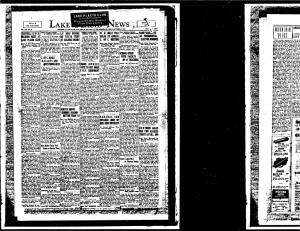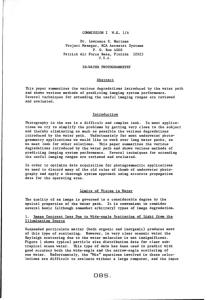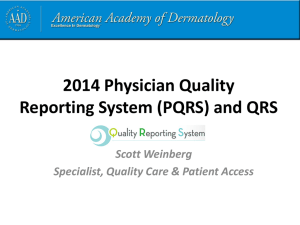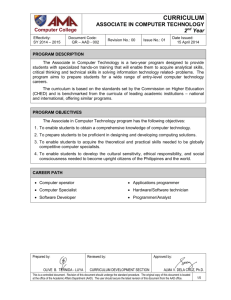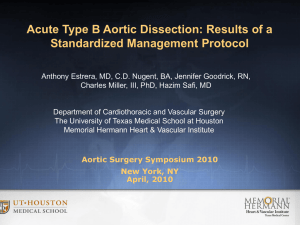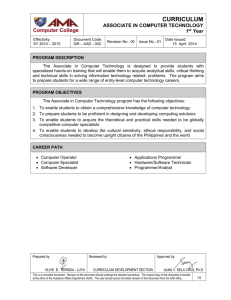placement incidence
advertisement
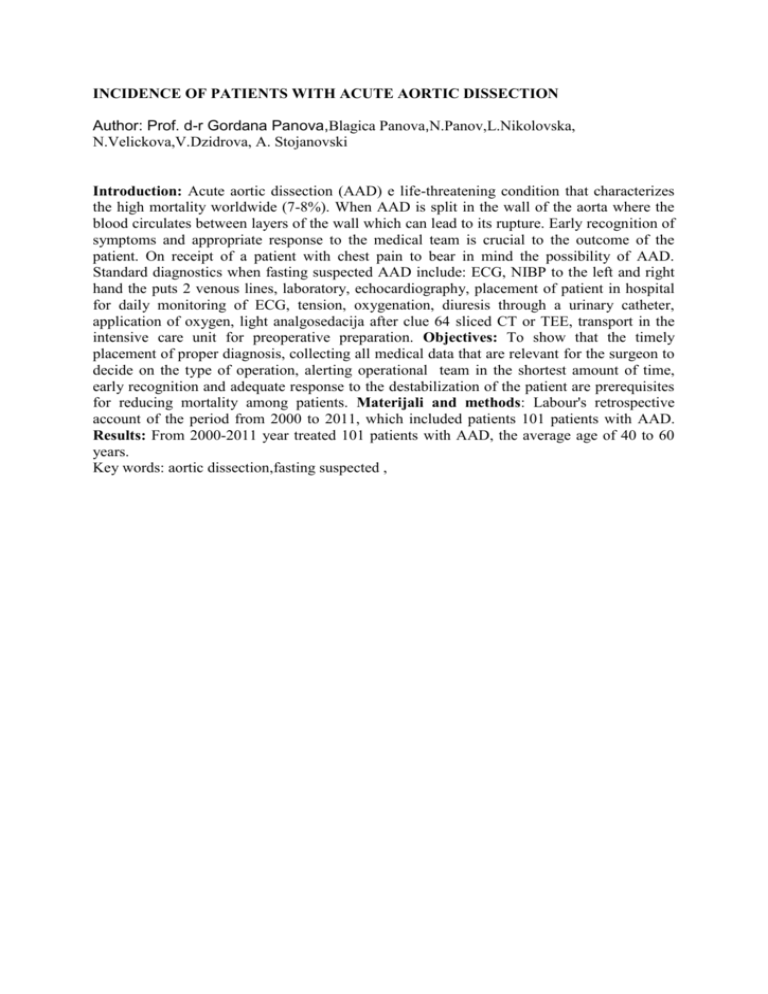
INCIDENCE OF PATIENTS WITH ACUTE AORTIC DISSECTION Author: Prof. d-r Gordana Panova,Blagica Panova,N.Panov,L.Nikolovska, N.Velickova,V.Dzidrova, A. Stojanovski Introduction: Acute aortic dissection (AAD) e life-threatening condition that characterizes the high mortality worldwide (7-8%). When AAD is split in the wall of the aorta where the blood circulates between layers of the wall which can lead to its rupture. Early recognition of symptoms and appropriate response to the medical team is crucial to the outcome of the patient. On receipt of a patient with chest pain to bear in mind the possibility of AAD. Standard diagnostics when fasting suspected AAD include: ECG, NIBP to the left and right hand the puts 2 venous lines, laboratory, echocardiography, placement of patient in hospital for daily monitoring of ECG, tension, oxygenation, diuresis through a urinary catheter, application of oxygen, light analgosedacija after clue 64 sliced CT or TEE, transport in the intensive care unit for preoperative preparation. Objectives: To show that the timely placement of proper diagnosis, collecting all medical data that are relevant for the surgeon to decide on the type of operation, alerting operational team in the shortest amount of time, early recognition and adequate response to the destabilization of the patient are prerequisites for reducing mortality among patients. Materijali and methods: Labour's retrospective account of the period from 2000 to 2011, which included patients 101 patients with AAD. Results: From 2000-2011 year treated 101 patients with AAD, the average age of 40 to 60 years. Key words: aortic dissection,fasting suspected ,


